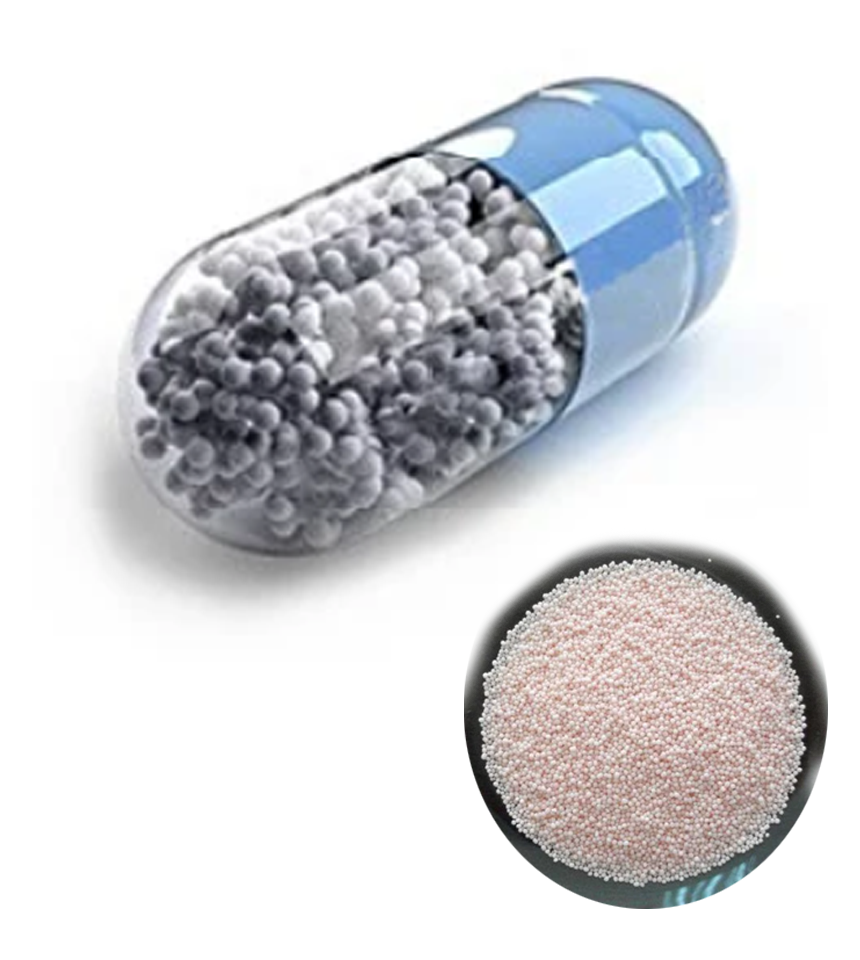
our approach aimed at maximizing productivity & efficiency.
Founder, Amuraj Pharmaceutical Inc Inc.
modern ways of manufacturing products.
Lansoprazole is a white to brownish-white odorless crystalline powder which melts with decomposition at approximately 166°C. Lansoprazole is freely soluble in dimethylformamide; soluble in methanol; sparingly soluble in ethanol; slightly soluble in ethyl acetate, dichloromethane, and acetonitrile; very slightly soluble in ether; and practically insoluble in hexane and water.
Lansoprazole, a substituted benzimidazole, 2-[[[3-methyl-4-(2,2,2-trifluoroethoxy)-2-pyridyl] methyl] sulfinyl] benzimidazole is a compound that inhibits gastric acid secretion.
Its empirical formula is C16H14F3N3O2S with a molecular weight of 369.37.
Lansoprazole is stable when exposed to light for up to two months. The rate of degradation of the compound in aqueous solution increases with decreasing pH. The degradation half-life of the drug substance in aqueous solution at 25°C is approximately 0.5 hour at pH 5.0 and approximately 18 hours at pH 7.0.
Innovator formulations are,
PREVACID Delayed-Release Capsules and
PREVACID SoluTab Delayed-Release Orally Disintegrating Tablets
The delayed-release capsules are available in two dosage strengths: 15 mg and 30 mg of lansoprazole per capsule. Each delayed-release capsule contains enteric-coated granules consisting of 15 mg or 30 mg of lansoprazole (active ingredient) and the following inactive ingredients: sugar sphere, sucrose, methacrylic acid copolymer, low substituted hydroxypropyl cellulose, starch, magnesium carbonate, talc, polyethylene glycol, titanium dioxide, polysorbate 80, hydroxypropyl cellulose, colloidal silicon dioxide, D&C Red No. 28, FD&C Blue No. 1, FD&C Green No. 3, and FD&C Red No. 40.
PREVACID SoluTab Delayed-Release Orally Disintegrating Tablets are available in two dosage strengths: 15 mg and 30 mg of lansoprazole per tablet. Each delayed-release orally disintegrating tablet contains enteric-coated microgranules consisting of 15 mg or 30 mg of lansoprazole (active ingredient) and the following inactive ingredients: mannitol, methacrylic acid, hydroxypropyl cellulose, lactose monohydrate-microcrystalline cellulose sphere, triethyl citrate, crospovidone, polyacrylate, magnesium carbonate, aspartame, glyceryl monostearate, hypromellose, magnesium stearate, citric acid, titanium dioxide, talc, artificial strawberry flavor, polyethylene glycol, polysorbate 80 and ferric oxide.
MKPPL formulated the Lansoprazole enteric coated pellets. The Pellets are agglomerates of fine powders or granules of bulk drugs and excipients. They consist of small, free flowing, spherical or semi -spherical solid units, typically from about 500 microns to 1.4 mm, and are intended usually for oral administration.
Enteric coated pellets are prepared using polymer like HPMC K5 and Eudragit L30 D55. The Pellets are prepared by suspension layering method. Drug release from the enteric coated pellets in 0.1 N HCL and phosphate buffer pH 6.8 is studied using USP method.
Pellets are of great interest to the pharmaceutical industry for variety of reasons. Pelletized products not only offer flexibility in dosage form design and development, but are also utilized to improve safety and efficacy of bioactive agents. The focal intent of the MKPPL was to develop a stable, pharmaceutically equivalent, robust, and delayed release micro pellet formulation of Lansoprazole for both Capsule and Orally disintegrating Tablets.
predictive machines
Fusce dui est ultricies nec ultricies acd porttitor quis tellus ned.
certified factory
Fusce dui est ultricies nec ultricies acd porttitor quis tellus ned.
product related FAQ’s
Lansoprazole is used to treat certain conditions where there is too much acid in the stomach. It is used to treat duodenal and gastric ulcers, gastric ulcers caused by NSAID use, erosive esophagitis, and gastroesophageal reflux disease (GERD).
Introduction. Lansoprazole is a proton pump inhibitor (PPI) and a potent inhibitor of gastric acidity which is widely used in the therapy of gastroesophageal reflux and peptic ulcer disease. Dexlansoprazole is an isomer of lansoprazole that has a similar spectrum of activity and toxicities.
Lansoprazole is a proton pump inhibitor that reduces gastric acid secretion. It has proved effective in combination regimens for the eradication of Helicobacter pylori and as monotherapy to heal and relieve symptoms of gastric or duodenal ulcers and gastro-oesophageal reflux.
It’s used for indigestion, heartburn, acid reflux and gastroesophageal-reflux-disease (GORD). Lansoprazole is also taken to prevent and treat stomach ulcers. Sometimes, lansoprazole is taken for a rare condition caused by a tumour in the pancreas or gut called Zollinger-Ellison syndrome.

